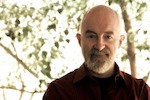- You are here:
- Home »
- Blog »
- Joint Health / Pain »
- What Should You Do When Something Feels Tight?
What Should You Do When Something Feels Tight?
Take a guess what almost everyone does when something in their body feels tight.
Stretch, right?
Have you ever had a hip that feels tight? You know, after you’ve maybe been sitting for a hour or so and then as you get up you notice that your hip is slow to straighten, feels tight and maybe even hurts a bit?
Then, after this has happened enough times, you decide you should do something about it.
So, you do what a lot of people do and what this article suggests – stretch (and, interestingly in this piece, there is actually very little “stretching” going on).
But, for most people, stretching rarely solves the problem especially if you’re 40+ years of age (and in our sedentary, Covid culture, 30 is the new 40).
Sure, if you stretch something, you might feel a bit better but it rarely lasts.
So, what’s going on?
In the case of something that feels tight after being still, it’s rarely the muscle that is actually tight or physically short.
There’s a difference between moving and feeling the tightness or even a painful stretching sensation and feeling stiff or tight after having been still for a period of time.
In the first case, the sense of tightness is from a lack of mobility. You may or may not need stretching. Mobility = strength + flexibility where flexibility is how far a joint or joints can be moved passively.
In the second case, you don’t need to stretch even though it might feel like you do. You need to move more, change positions more often and sit or stand less.
When a joint needs help, one of the signals or ways it “talks” to you is via the sensation of stiffness. This stiffness is also interpreted as feeling “tight”. Sometimes there’s a sensation of aching too.
Inside the joint is a lubricating fluid called synovial fluid. Synovial fluid is usually the consistency of an egg white and helps create smooth movement and also acts as a kind of shock absorber but when the joint tissues have been over taxed, the fluid becomes thinner. Thinner fluid gives you a stiffer joint. However, this stiffness often improves when you move.
Back in my basketball playing days, I remember standing on the sideline waiting for a pick-up game to start and noticing a tight, stiff sensation in my lower back. I was in my early 30’s at the time. The reason I can remember it so clearly is because it was the first time I had ever noticed anything like that happening.
So, I did what almost everyone does. I tried stretching. Bending over, twisting or turning in an effort to loosen up for the game.
Didn’t work.
As I started playing, the stiffness subsided, went away and so did my sense of urgency. The tightness and stiffness would come and go so I, yes, I ignored it until I couldn’t.
You might be wondering, “Since you know about this stuff why didn’t do something about it?”
Fair question. The answer is I am a lot like you or someone you know. The first thing people do is deny they have a problem. It’s just human nature. “Oh, it’s not that bad. It’ll get better.” And sometimes that works out. Usually though things tend to worsen over time if you don’t do something to change the health of your joint.
If you notice your hip, or neck, or lower back feeling tight, that usually means those joints need some help. The temptation will be to stretch yet it rarely solves the problem….and sometimes makes it worse.
Instead, move more often and get into a strengthening program for the areas that feel tight. Your joints will become healthier and as a result, you’ll feel less “tight”.
Thanks for reading.

If you like this article, why not share it with a friend? If you’re interested in coaching services, please contact my colleague Laurie Kertz Kelly for a free, 20-minute Strategy Session by, clicking here. To get my Secret Weapon to fight knee, hip & back pain and stiffness, subscribe for free today.

Doug Kelsey has been a physical therapist and human movement expert since 1981. He is formerly Associate Professor and Assistant Dean for Clinical Affairs at the University of Oklahoma Health Sciences Center and the author of several books. He has conducted over 250 educational seminars for therapists, trainers, physicians, and the public and has presented lectures at national and international scientific and professional conferences. His professional CV is here.
